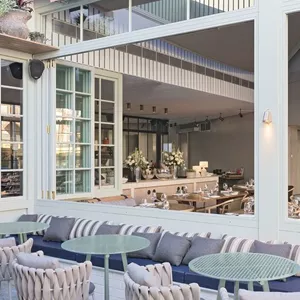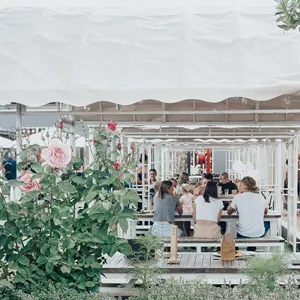Healthy Living: Top Tips for Making Your Home Healthier
Have you ever considered how toxic your home decoration and furniture choices are? In this article, find out how you can expertly create a stylish and healthy home.
Worldwide lockdowns during the past couple of years have meant that many of us are spending more time at home than ever before. We’ve had months of staring at the same walls, floors and furnishings! It’s no surprise that it seems everyone you speak to has been inspired to start a home renovation or design project during the pandemic.
If you’re one of the many planning a home improvement project, stop right there! Step away from the paintbrush, as Liz Linforth, co-founder and creative director of holistic interior design firm Studio Mae Interiors, shares super interesting (and potentially lifesaving) information about the impact of toxic home furnishings on your health, and how to harness healthy interior design.
What is Healthy Interior Design?
Healthy interior design is about choosing finishes and furnishings that don’t damage your health but support it.
For example, when it comes to paint, many traditional brands contain volatile organic compounds (VOCs). These chemicals are used in solvent-based products to improve the transfer and flow of the paint or varnish. However, some VOCs have been found to cause nervous system and organ damage, according to the American Lung Association. Inhaling the fumes from VOCs can also cause irritation of the eyes, nose and throat as well as headaches, nausea, breathing difficulties and dizziness.
On the flipside, natural paints have been around since the turn of the century. Romans and Greeks used them for their excellent durability and breathability. As natural paints are made from limestone or clay they assist in reducing mould and spores in high moisture areas too as they allow the walls to breathe.
Some of my favourite Australian brands are Ecolor, Graphenstone and Bauwerk Colour. These brands use natural pigments with no VOCs and don’t even need to be aired.
Top 2 Toxic Furnishing Materials to Avoid in our Homes
1. Paint
Stain resistance chemicals in carpets and curtains (and many other household items), which contain fluorinated chemicals known as PFAs. PFA exposure (in just small doses) has been linked to birth defects, hormone disruption, liver damage, cancer and damage to the immune system. Scary stuff when you think of your pets or little ones lying on these materials daily. Don't worry, like with most things, Mother Nature has us covered. Natural materials like linen, wool, cotton and sisal will support your health rather than adding to the toxic load.
2. Mattresses
Another big one is flame retardant chemicals. Often used in mattresses, fire-resistant chemicals contain boric acid, antimony and halogenated flame retardants, which have been linked to issues with brain development and nerve function in children, and cancer and infertility in adults.
Mattresses need to meet strict fire health and safety regulations, but this doesn’t mean they have to contain these chemicals. In fact, there are non-toxic materials that are naturally fire resistant like wool. The Natural Bedding Company, Peace Lily and Natural Sleep, to name just a few, produce great non-toxic mattresses.
Article and photos courtesy of Studio Mae Interiors





